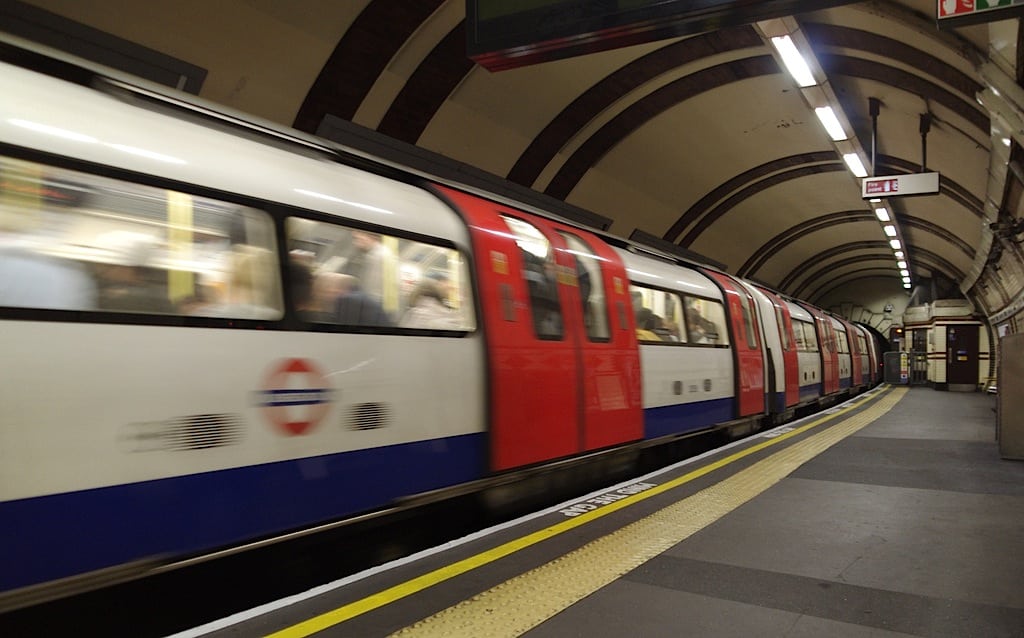Skift Take
Can travel be truly satisfying when we spend hours every day on the road traveling to and from jobs we could do without leaving home? And is there a smarter way to achieve the right balance?
Trains are full of commuters travelling into an office when they could just as easily complete their work from the kitchen table
Just because you’re looking at a broken clock, it doesn’t follow that the time it shows is wrong. I’m no fan of the TUC, other than in a vaguely curious, “Are there really still people like that, Daddy?” sort of way: but for once they’ve done the public a service this week by publishing figures that show just how onerous the commute to and from work has become.
Few daily experiences are as soul-destroying as the unpaid hours spent in the mincer of London transport, where the average length of commute comes in at 75 minutes – each way. It’s not so much a mincer, really, more one of those rendering devices, steaming the remains of the human soul from the carcass, leaving the half-dead ready for a day in the office.
Before we moved from east to north London, it took me that average 75 minutes (if I was very, very lucky) to bus and train it to work. Now we’re in the outer limits, in a borough of which Inner London and the media remain blissfully unaware (until it turns out to re-elect Boris), and work is a 30-minute drive away, up the A1 (M) to the shining city on the hill (or New Town in Hertfordshire). From average, to under-average; an unexpected route to increased happiness.
This much I know: I wouldn’t have survived in my job, pre-move, if the commute had been mandatory, five days a week. I’m lucky, though: my employer is a MegaCorp, and enlightened, and genuinely interested in work/life balance. Working from home, from time to time, is permitted. Any shred of fondness my own staff have for me is almost certainly due to the remarks with which I greet new starters: “I promise you that one thing I will never ask you when I phone is, ‘Where are you?’ ”
Why would I? These guys work in London, Hertfordshire and Pennsylvania. The project teams we work with are based not just there but also in North Carolina – and China, and Singapore…
Office 1.0 – that is, up to the mid-1990s – required all team members to be physically co-located; there was no alternative. Up to the early 1990s, hand-typed statistical analyses were prepared as intra-office memos, placed in an “out-tray”, then delivered to the recipient, who would copy it (or whose secretary would copy it), make corrections to the copy, place it in another out-tray, from where it was re-delivered to the statistician, who would make the required changes.
You get the idea. The life of a clinical trials statistician (and newspaper writers, come to think of it) is a little more electronic and therefore productive these days (not that I don’t regret the passing of a more peaceful office cycle: I’m not arguing that decisions made more quickly are necessarily more correct). Which led to the first – well, “realisation” is putting it too strongly. It was more a growing awareness: Office 1.1, if you will.
In e-world, there is little physical requirement for co-location; and it became obvious that neither was there a rule that said: “The best team is necessarily composed of people who happen to be physically closer to one another.”
Once geographically distributed but electronically connected teams became the norm, over a period of maybe 10 years, it didn’t take long for workers themselves to reason that it could be taken further. If I don’t need to be in the same office as the people I’m working with, why do I need to be in an office at all? Why can’t I stay at home?
The pleasing observation is that, given this freedom, most staff reward their employers in spades. Most people don’t want to work in isolation more than a day or two a week. We need the rhythm and the interaction of an office environment some of the time.
But not all of it, and, oh, the difference it makes to know that you don’t have to start every working day jammed on to a Tube. Next time you’re on a bus or train at 7am look about you: how many of your fellow passengers are travelling into an office to do work they could as easily complete from their kitchen table? Remove those passengers, a proportion each day, and the commute becomes less stressful for everyone. Virtual “Office” 2.0 was boosted by the pre-Olympic travel panic when – this is my point – so many people worked from home that the tube journey for the remaining commuters was more pleasant than normal.
That’s the office-based middle class taken care of then. But no cultural change in Britain lacks a class dimension, and there was one man disadvantaged by our move to north London, the move which, combined with home-working, de‑stressed my existence.
My partner is an electrician. Not much home-working you can do there. He used to stroll to work in the City from our Hackney flat. Now we’re suburban he has to queue up for the electric train with everyone else, then stand all the way to Old Street.
Work/life balance rolls off the tongue. Trouble is, it’s usually two works/two lives, and as one end of the seesaw dips… It’s all very well for white-collar workers to embrace the convenience of a virtual office. Life for the working man continues to be more real, and more difficult.
![]()
The Daily Newsletter
Our daily coverage of the global travel industry. Written by editors and analysts from across Skift’s brands.
Have a confidential tip for Skift? Get in touch
Photo credit: The Northern Line of London's Tube. Matt Buck / Flickr.com
